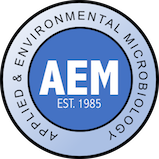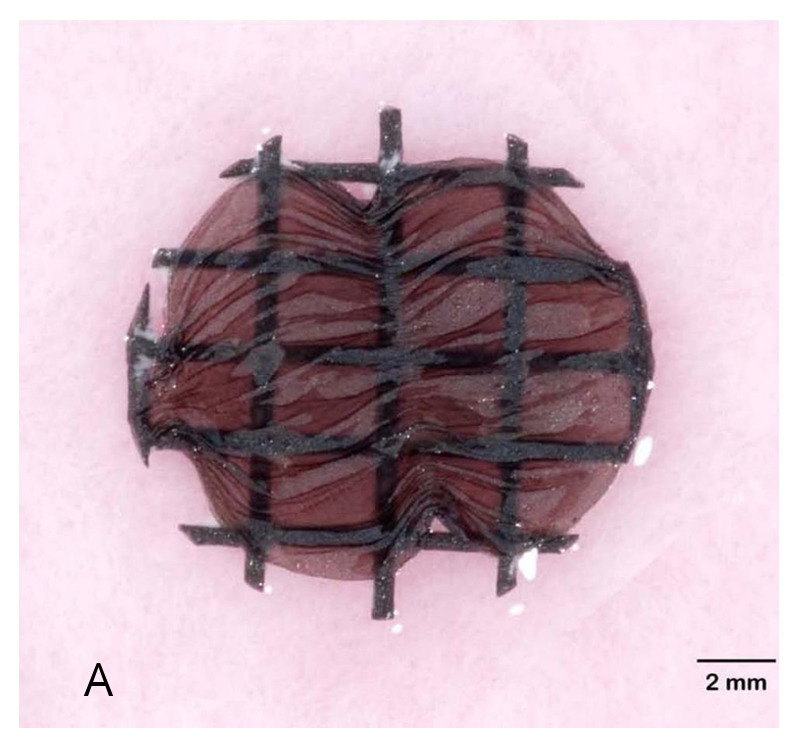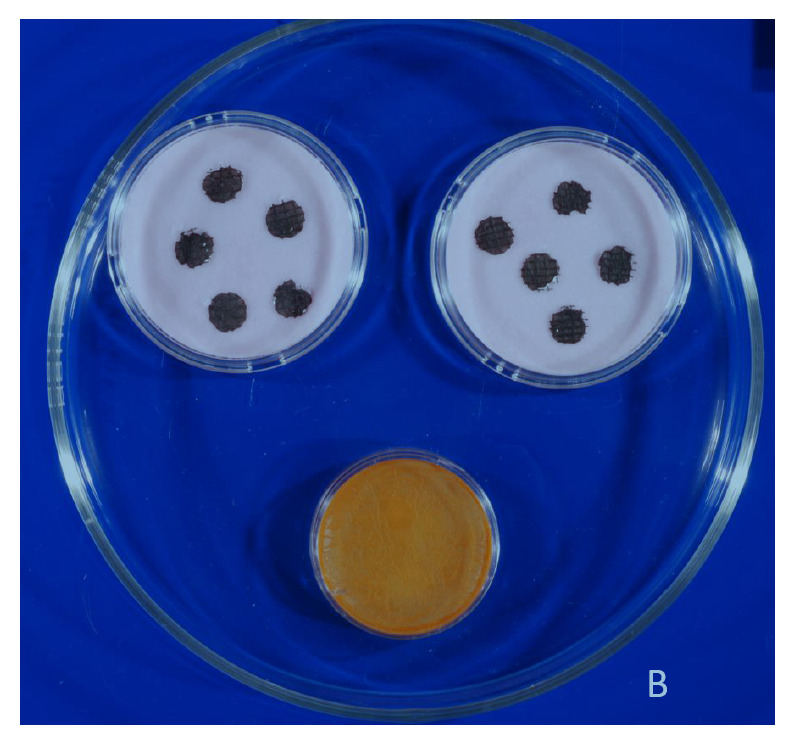
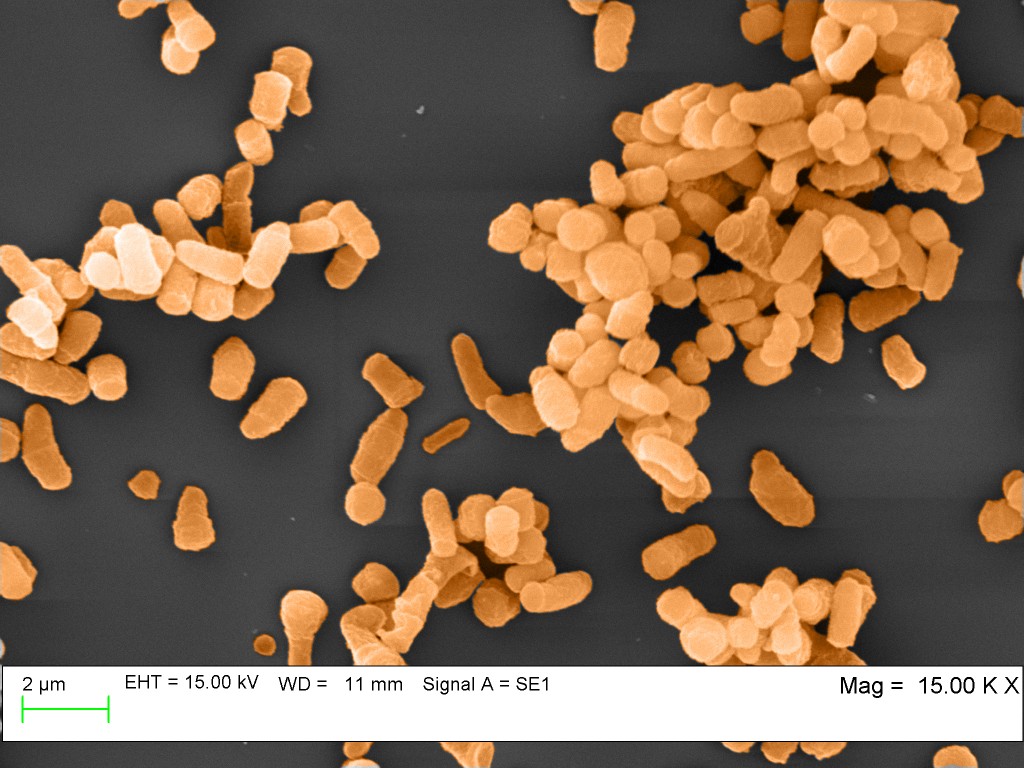
Our researchers are investigating contact-independent inhibition of phytopathogenic fungal organisms via the use of the naturally occurring Gram-positive soil based bacteria, Rhodococcus rhodochrous DAP 96253. Growth of several important agricultural pathogens, such as Aspergillus spp. and Botrytis cinerea, have been shown to be inhibited when Rhodococcus rhodochrous DAP 96253 is induced under specific conditions and placed in the vicinity of the organism in a contact-independent fashion. Our researchers have demonstrated that these inducing and growth conditions of Rhodococcus rhodochrous DAP 96253 are scalable and replicable with the use of pre-pilot fed-batch fermentors.
Agricultural Applications
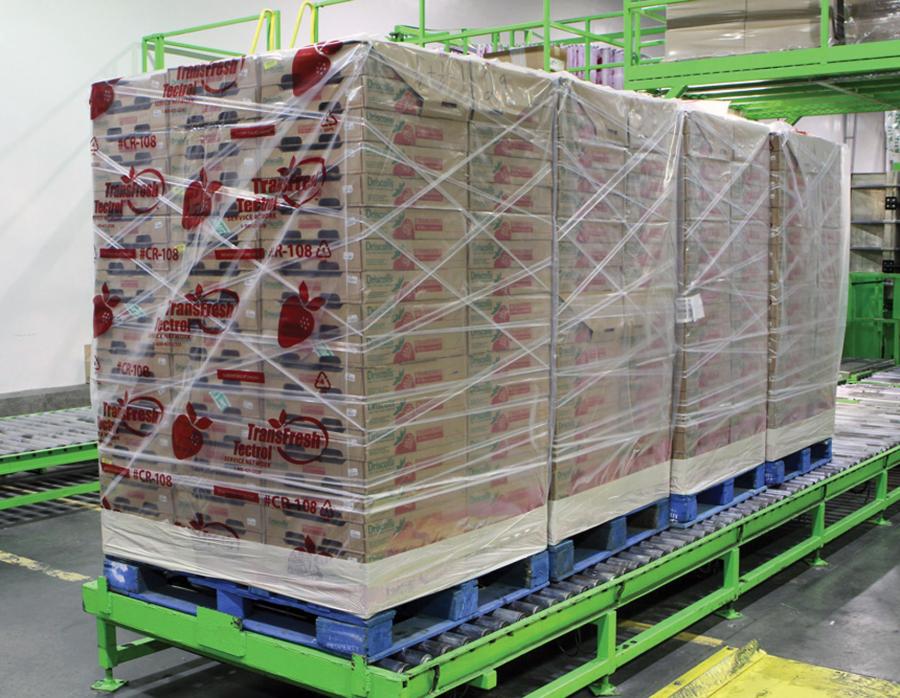
Fungal Inhibition in Strawberries
Even under ideal growing conditions, strawberries are one of the most expensive crops to cultivate domestically, with a cost of $27K per acre. The growing season for berries in the Eastern US is restricted to late spring, and the remainder of the year they are shipped transcontinentally resulting in a lower quality, higher cost product for consumers. Often, saprophytic fungi, including Rhizopus spp, Mucor spp, and Botrytis cinerea, overtake the fruits rapidly. Botrytis cinerea can infect and render post-harvested berries inedible as well as infecting living plant material. Infections spread rapidly and can destroy up to 60% of crop yields if left untreated. Currently, agricultural control methods include a systematic rotation of several chemical fungicides.
Research Spotlight – Strawberries

Rhodococcus rhodochrous DAP 96253 Wax Catalyst Cardboard Insert.
Treated cardboard was inserted with strawberries and refrigerated for eleven days. Control only contained wax.
Research Spotlight – Botrytis cineria

Inhibition of Botrytis cinerea Growth after Exposure to Induced Cells of Rhodococcus rhodochrous DAP 96253
104 B. cinerea spores were inoculated on media and grown in the absence (A) and in the presence of induced cells of Rhodococcus rhodochrous (B). Inhibition of B. cinerea spore growth was observed when exposed to induced cells of Rhodococcus rhodochrous.
Research Spotlight – Aspergillus flavus
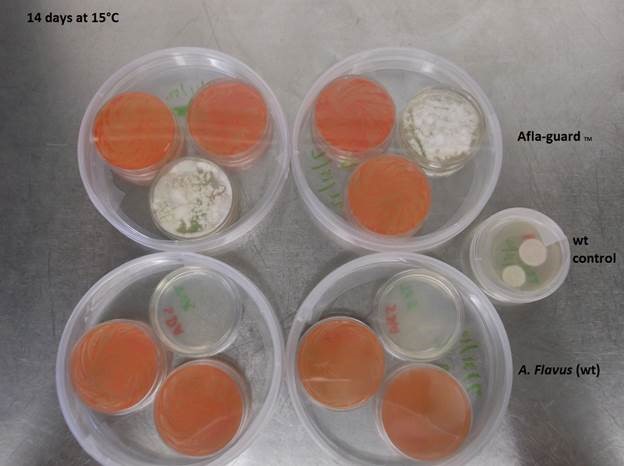
Aspergillus flavus Spores (Wild Type and Afla-guard™ Non-toxin Producing Strain) were Exposed to Induced Cells of Rhodococcus rhodochrous DAP 96253 at 15°C for 14 Days
Complete inhibition of mycelial growth was seen with wild-type Aspergillus flavus when exposed to induced whole-cells of Rhodococcus rhodochrous DAP 96253.
Research Spotlight – Wildlife Applications
Expanded image of a control bat-wing explant (A) showing fungal growth covering the surface of the explant just 2 days after inoculation with P. destructans and (B) bat-wing explants exposed to P. destructans still showing no growth 21 days after inoculation with P. destructans and exposed to induced cells of Rhodococcus rhodochrous DAP 96253.
Inhibition of Pseudogymnoascus destructans
Our research team investigated novel and efficacious methods for biological and chemical control of Pseudogymnoascus destructans – a major fungal pathogen affecting bat populations in the US.
Rhodococcus rhodochrous strain DAP 96253 has been shown to produce non-contact fungal inhibition following induction. Antifungal volatile organic compounds (VOCs), VOC formulations, essential oils, and other compounds are also being investigated for their ability to inhibit fungal growth.
The majority of this research is being continued at the BioInnovation Laboratory at Kennesaw State University under Dr. Chris Cornelison.
Additional information can be found on the old Crow Laboratory website.
Related Published Papers and U.S. Patents
Cornelison CT, Keel MK, Gabriel KT, Barlament CK, Tucker TA, Pierce GE, Crow SA. 2014. A preliminary report on the contact-independent antagonism of Pseudogymnoascus destructans by Rhodococcus rhodochrous strain DAP96253. BMC Microbiology. 14:246.
US 10,004,237
Inhibiting or Reducing Fungal Growth
US 2017/0112882
Inhibiting or Reducing Fungal Infections
